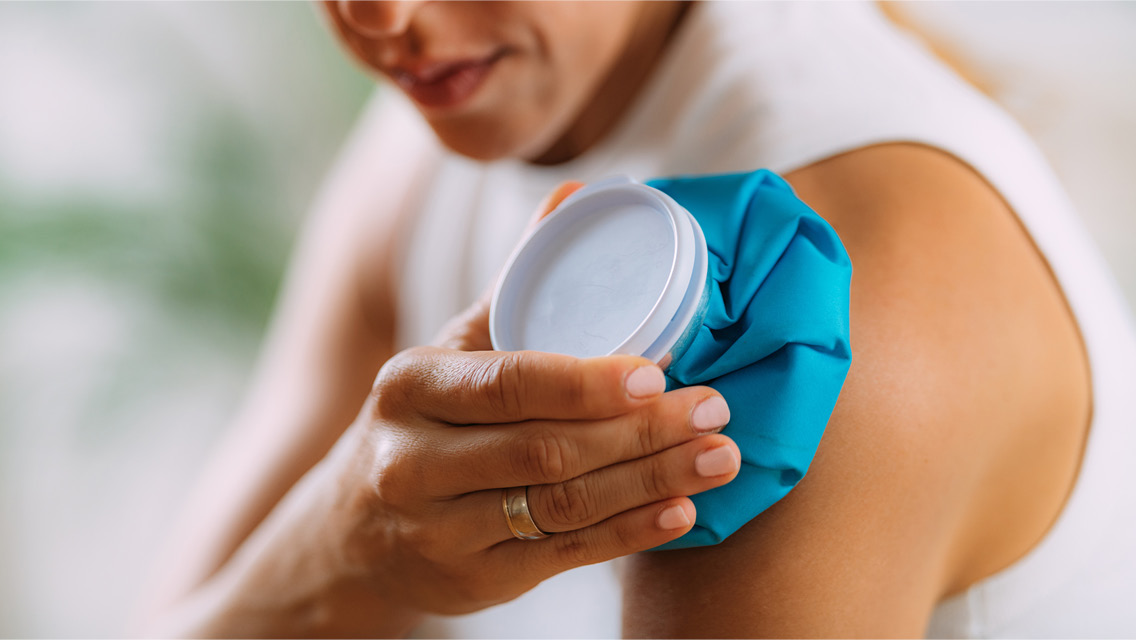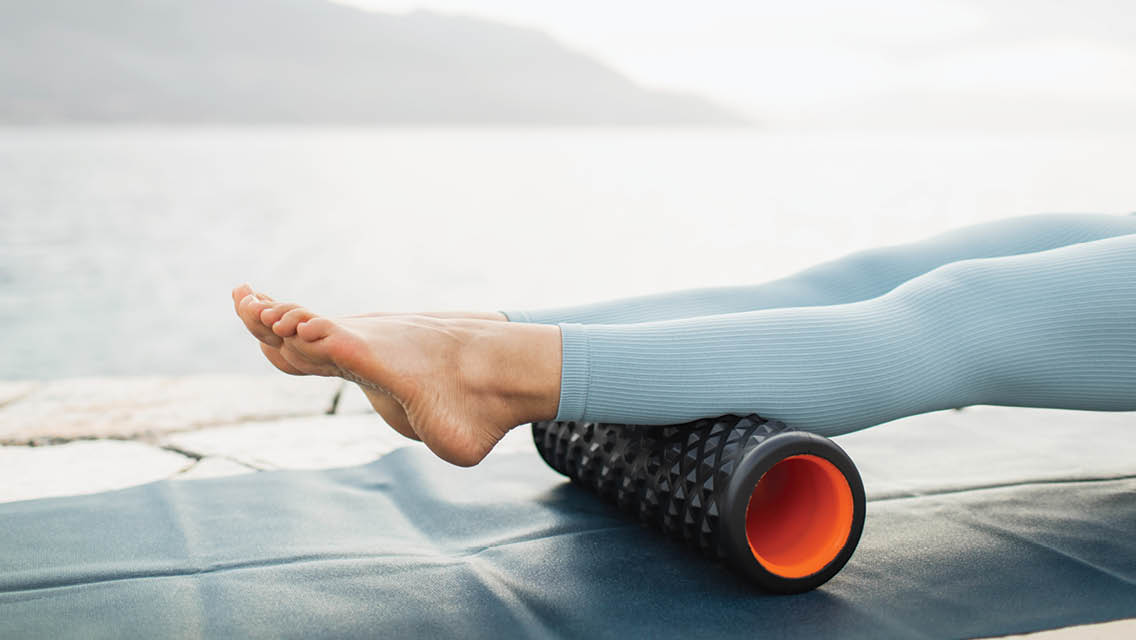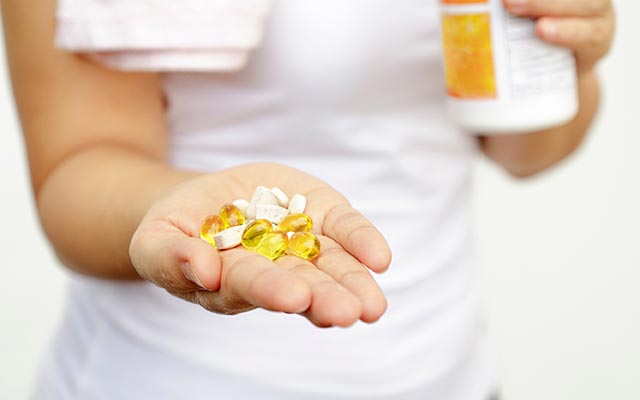For years as an avid runner I made a point of doing one tough, no-holds-barred run per week. The workout itself wasn’t so bad. But on the so-called easy days that followed, I was sore. The second day of rest invariably felt worse. I ached getting out of bed, going down stairs or just walking from my house to my car.
My workout log for those recovery days read like a litany of bodily woes: “legs trashed,” “quads wrecked” or, when I was too beat up to even be creative, just “sore and tight.”
Unbeknownst to me, I could have summed up my symptoms with four letters: DOMS. That’s short for “delayed onset muscle soreness,” a phenomenon that has long bedeviled athletes from Olympians to weekend warriors. Thankfully, recent scientific research now gives us a better understanding of what causes DOMS, which can help us minimize its impact — both before and after it strikes.
The Damage Done
DOMS is different from the acute pain felt immediately after a muscle pull or strain. It’s also distinct from the simple muscle fatigue felt during and right after a workout, which is caused in part by the accumulation of lactic acid in muscle tissues. That kind of pain usually subsides after a few minutes of rest, and lactate levels return to normal within 30 to 60 minutes after exercise.
By contrast, DOMS creeps up more slowly. Soreness usually develops within the first 24 hours after exercise and peaks within 48 to 72 hours. It rarely lasts more than six or seven days, but in severe cases it can persist for several weeks.
Fortunately, DOMS does no permanent damage. And the days of discomfort don’t go entirely unrewarded: Provided you allow your muscles to rest and heal adequately, DOMS- provoking exercise (like any challenging exercise) does stimulate muscle growth. As the pain associated with DOMS subsides, you’re left with stronger, better muscle tissue.
Scientists first described DOMS more than a century ago, but even today, many things about DOMS remain a mystery. Many health experts now believe the primary cause is microscopic tearing of muscle fibers and connective tissues at the cellular level. “The basic idea is that the cell has been broken, so the body has to go in and rebuild it,” says Lynn Millar, PT, PhD, an exercise physiologist and professor of physical therapy at Andrews University in Berrien Springs, Mich.
DOMS can result from any activity that strains the body with an unfamiliar challenge. If you’re relatively inactive and then suddenly decide to bang out 60 minutes on the stair climber, don’t be surprised if you wind up with a ghastly pain in the gluteus maximus a couple days later. But you don’t even have to work out to invoke the wrath of DOMS: Spending a few hours engaged in any activity that you don’t regularly do, like painting your ceiling or pulling weeds, can induce soreness.
Another culprit of DOMS is what experts call “eccentric” (pronounced ee-sentric) exercise — the lowering portion of any resistance-training exercise, as opposed to the lifting, or concentric, part. Eccentric exercise requires muscles to simultaneously lengthen and contract, essentially “braking” while they are in motion. As a result, they may cause more microscopic tears in the tissue. In addition to lowering weights, eccentric exercises include running downhill, descending stairs and doing squats.
Undergoing Repairs
Once DOMS has occurred, the damaged muscles have a limited range of motion and decreased power output. The pain signals sent to your brain are your body’s way of indicating that damaged tissues are “closed for repair.” You feel stiff, creaky, sore and weak. Swelling in the damaged tissues may put pressure on nerve endings, exacerbating pain.
“The pain feedback is a safety factor,” says Allan H. Goldfarb, PhD, an exercise physiologist and professor at the University of North Carolina, at Greensboro. “If you ignore it, you could delay the repair process and cause further damage.”
A certain degree of soreness is part of any exercise regimen when an athlete pushes new boundaries. “If you feel pain all the time, however, it means you’re overtraining,” says David J. Szymanski, PhD, CSCS, an exercise physiologist and assistant professor at Louisiana Tech University, in Ruston, La.
If regular bouts with DOMS are impeding your activity, or turning you off to exercise altogether, you’ll probably get better benefits by dialing it back a notch for a few weeks.
That’s how I won my own battle with DOMS, anyway. I started focusing more on long-term progression, and I learned to push the envelope — without tearing it.
Preventing the Pain
Your best strategy for delayed Onset muscle soreness (DOMS) is to stop it before it occurs. You can avoid DOMS — or at least reduce its impact — by following these two simple rules:
Warm up. You’ve heard this before, and it bears repeating: Warming the muscles and connective tissues makes them more elastic and less prone to tearing.
David J. Szymanski, author of a 2001 article titled “Recommendations for Avoidance of DOMS” in The Strength and Conditioning Journal, suggests beginning with an active, dynamic warm-up, such as running in place while bringing your knees up high in front of you (or bringing your heels up to your glutes, as if you were doing a quad stretch). Light, aerobic activity, such as a few minutes of jogging or biking, is effective, too. Both activities will raise core body temperature and reduce the risk of muscle tearing.
Monitor your progress. When starting an exercise program, minimize eccentric activity until you’re ready to handle the load. If you’re new to weightlifting, for example, you might want to ask your workout buddy or a staff person to assist you as you lower a heavy barbell.
The trick is to integrate enough eccentric exercise into your workouts to adapt your muscles to this kind of unfamiliar exertion, without doing so much that it leaves you sore. Studies have shown that repeated bouts of low-intensity eccentric exercise performed one to six weeks before beginning higher-intensity eccentric bouts consistently reduce exercise-induced muscle damage. Exercise physiologists call this adaptation the “repeated bout effect.”
If you’re a runner, for example, you might start with a weekly workout that involves 10 dashes down a 100-meter slope, boosting the number of repetitions by five each week. Similarly, if you’re going to be doing an eccentric activity like squats — or any resistance exercise that has a lowering component — begin with a weight that’s comfortable for one to two sets of 10 repetitions, then progress over several weeks to three sets of eight to 12 repetitions (for strength) or 15 repetitions (for endurance). In theory, this gradual introduction allows for faster recovery and allows muscle and connective tissue to adapt to the new load without triggering DOMS.
Soothing the Soreness
What if you’ve already overdone it? Well, the good news is that the pain will subside within a few days. The bad news is that little has been shown to speed actual recovery from DOMS, but the following may make you feel a bit better:
Exercise. Much as you may want to just sit and moan, remaining sedentary may slow recovery. “If you don’t do anything, your circulation decreases,” Millar says. “You need to get blood in those muscles to help the healing process.”
So, light exercise may be a good idea. But pace yourself: Some studies have shown that the strength of muscles affected by DOMS can languish at just 80 percent of normal capacity for up to two weeks.
Ice. The evidence surrounding ice’s effect on DOMS remains inconclusive, but the idea is that icing sore areas stimulates blood flow, which can reduce inflammation and promote healing. One study in the Journal of Athletic Training showed that cold whirlpool and hot-cold contrast therapy helped improve flexion and perception of pain among test subjects suffering from DOMS in the elbow.
Massage. A study published in the British Journal of Sports Medicine concluded that while massage two hours after strenuous exercise did not improve muscle function, it did reduce the intensity of muscle soreness.
Antioxidants. Some studies have shown that consuming antioxidants may offset the pain associated with DOMS. Antioxidants, such as vitamins C and E, fight the development of free radicals, which many scientists believe proliferate as inflammation associated with DOMS sets in, potentially causing additional harm to damaged muscles. But the effectiveness of antioxidant therapy has been inconsistent among several studies.
Pharmaceuticals. Nonsteroidal anti-inflammatory drugs (NSAIDs), such as ibuprofen, may reduce discomfort, but they won’t help you heal faster, says exercise physiologist Allan H. Goldfarb, PhD, a Fellow of the American College of Sports Medicine. “It doesn’t appear that [taking ibuprofen] speeds up muscle repair,” he says. In fact, there’s some evidence that NSAIDs inhibit muscle growth and repair when taken after exercise.
This article has been updated and originally appeared as “Sore Winner” in the January/February 2006 issue of Experience Life magazine.




This Post Has 0 Comments